[One with Nature] Gwangyang has more to offer than just plum blossoms
By Lee Si-jinPublished : April 22, 2023 - 16:01
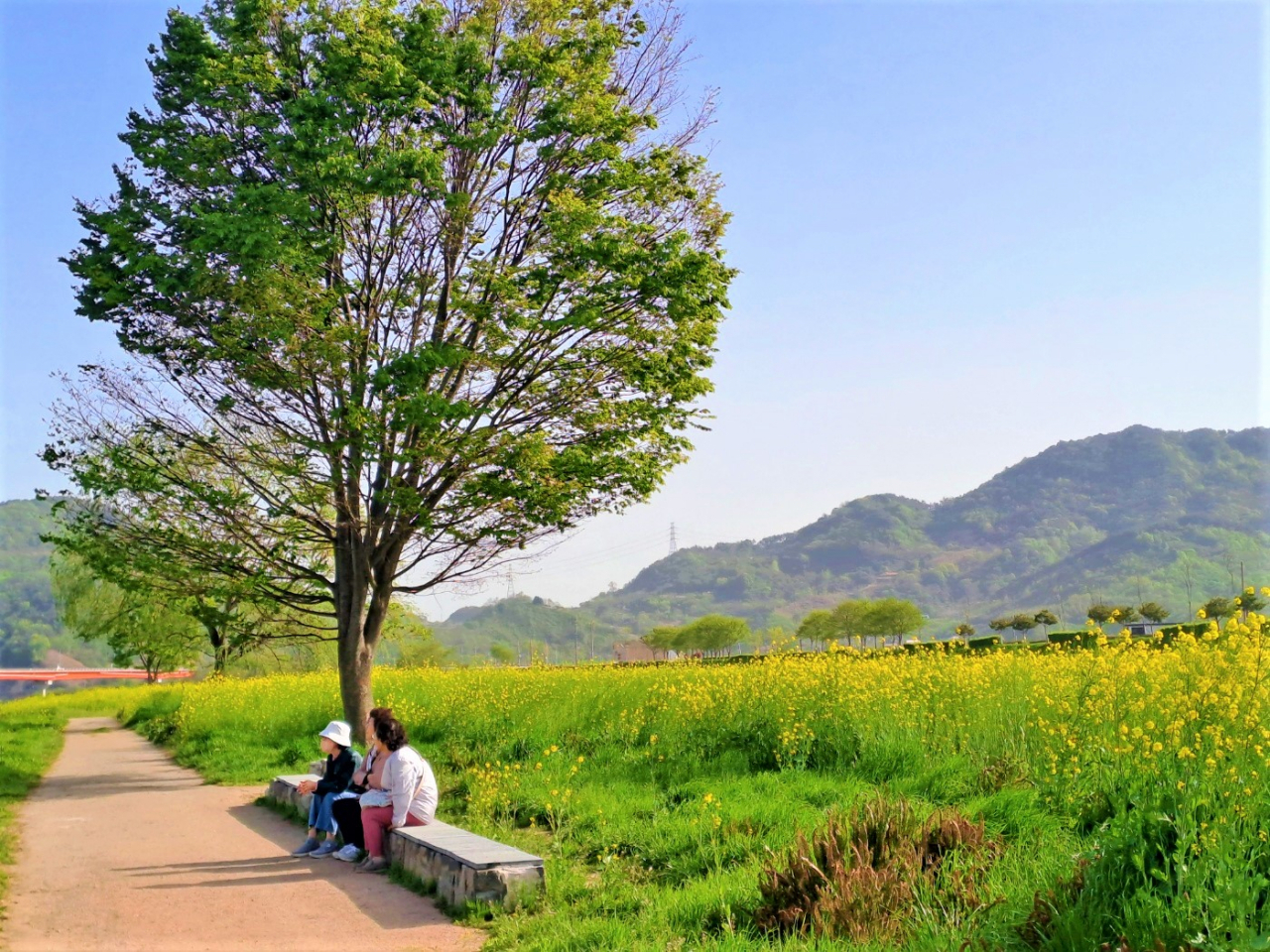
GWANGYANG, South Jeolla Province -- Gwangyang, some 300 kilometers south of Seoul, is home to vast fields of plum blossom trees, which draw huge crowds from around the country each spring.
The flowers that blossom here are some of the first to bloom on the peninsula, signaling the arrival of the new season.
From early to mid-March, the city and Hongssangri Plum Farm, widely known as Maehwa (plum) Village, is crowded with people who come to see the flower-filled fields.
As the popcorn-like blossoms fall from the trees and the picturesque village turns from white to shades of green, visitors thin out and the plum farm grows quiet.
But Gwangyang-born housewife surnamed Hong, 56, told The Korea Herald that April may be a better time to enjoy her hometown.
“You will miss out on the popular plum blossoms but (visiting in April) may be better than the countless visitors, getting out of cars, buses, taxis and the noise of the crowds. There are so many other things to enjoy in Gwangyang. For example, the canola flowers,” Hong said.
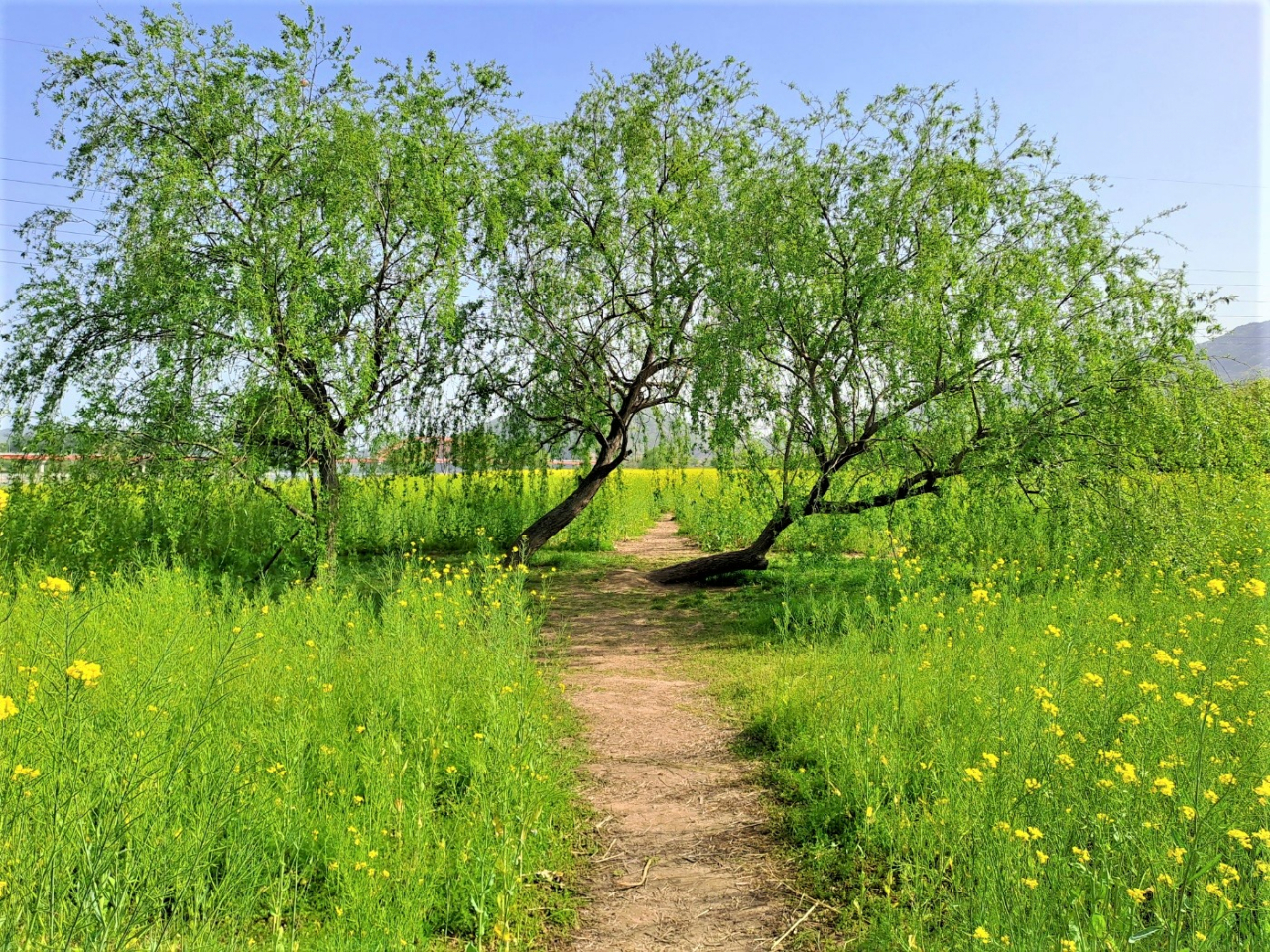
Ggeutdeul Village's canola flowers
The canola flowers at Ggeutdeul Village -- a small riverside village near Seomjingnag in Gwangyang -- beckons with scenic views and waves of yellow-colored flowers as soon as the plum blossoms and cherry blossoms disappear.
Starting in early April, the canola flowers gently sway to the rhythm of the spring breeze.
The 20,000-square-meter canola flower field captures people's hearts, not only with the cheerful yellow flowers, but also with the visitor-friendly walking path.
The small dirt roads offer a chance for the visitors of all ages to tour around the field without damaging the flowers, many of which are as tall as a grown person.
If you wish to view the flowers from a distance and enjoy the panoramic views, take a step back to the main walking trail, where trees and benches invite visitors to sit down and take in the surroundings.
Visitors can bike along the Seomjingang Bicycle Path while appreciating both the beauty of the springtime flowers and the spectacular view of the winding Seomgjingang, one of the four major rivers in South Korea.
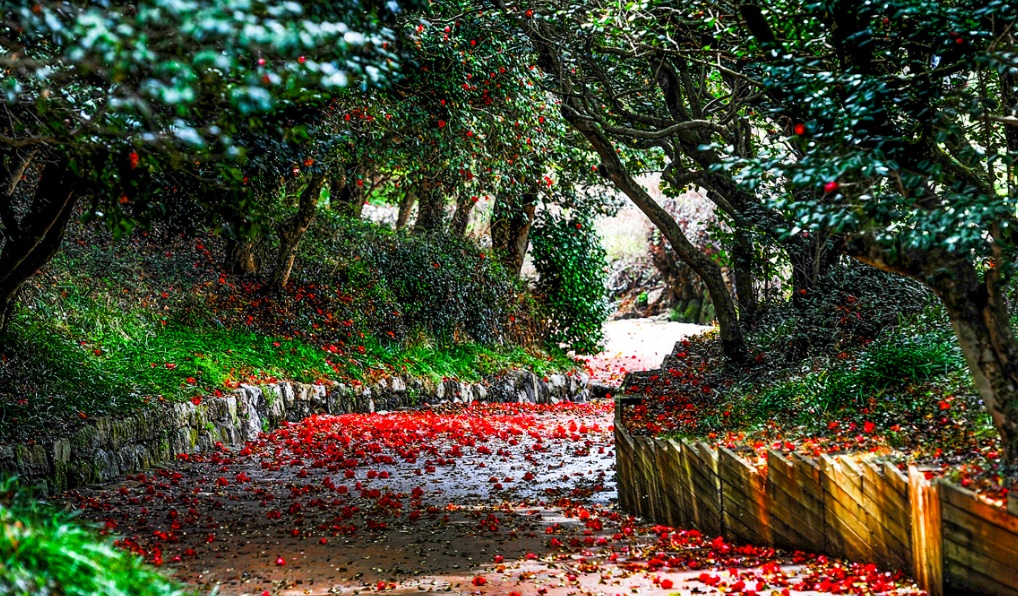
Ongnyongsa's camellia grove
While the canola flower field attracts visitors with its corn yellow petals, the camellia grove at an old Buddhist temple site where Ongyongsa stood during the latter part of the Silla Kingdom (57 BC to 935 AD), mesmerizes with scarlet red flowers.
The forest of camellias, named as one of the top nine spots in Gwangyang, is one of the largest in Korea with some 10,000 trees.
After a two- to three-minute walk on a winding, paved road that starts at the nearby parking lot, visitors can enter a flower tunnel of camellia trees.
The walking trail with a slight slope continues with small-sized stone walls on both sides.
As soon as the flower tunnel ends, a sweeping view of the Ongyongsa temple site appears.
Visitors can be seen building their own stone towers, making a wish and praying for good fortune at the site.
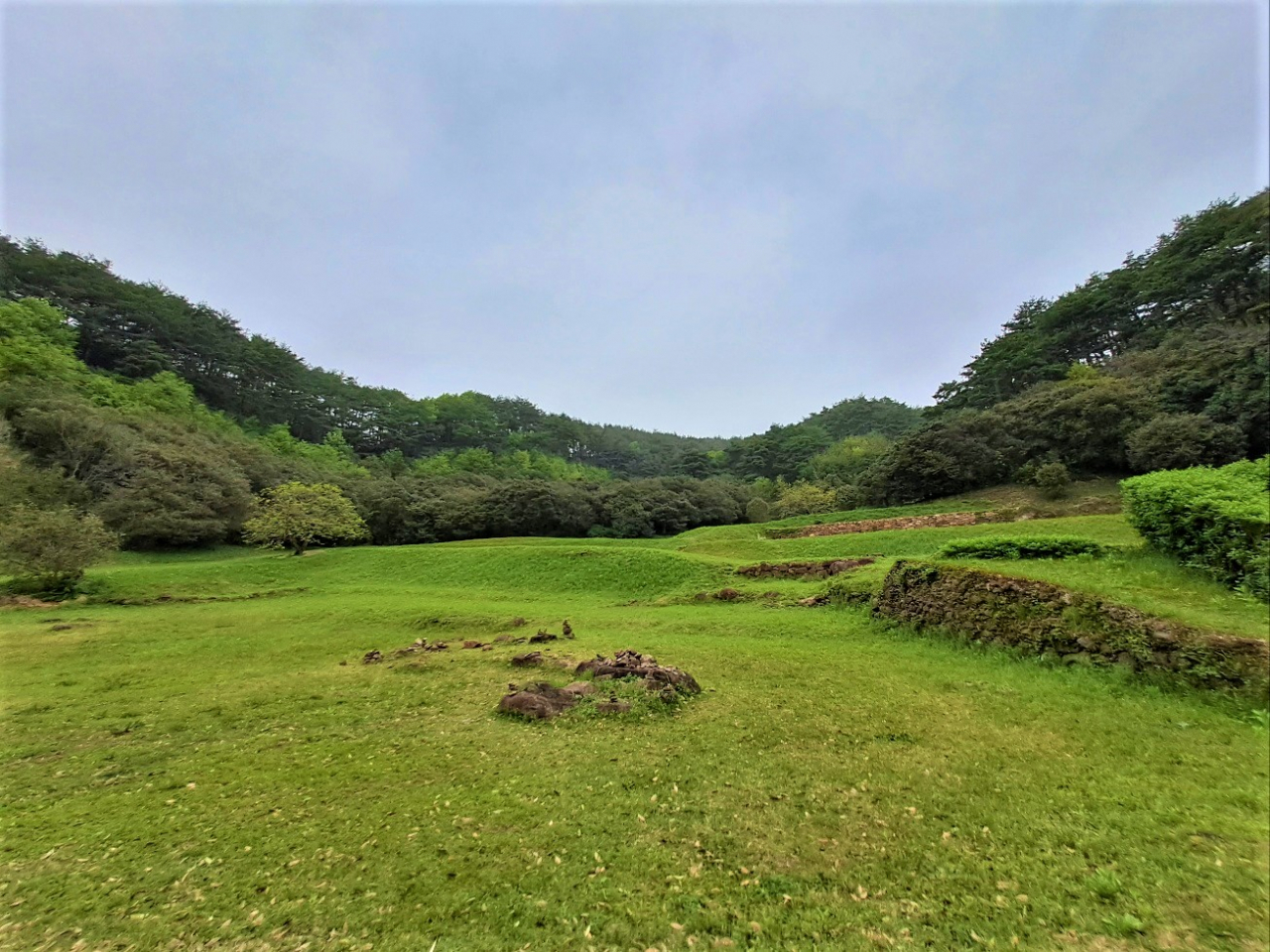
“According to a legend, the camellia trees were planted by Doseon (827-898), a renowned Buddhist monk and master of “pungsu jiri,” or feng shui, who tried to make an auspicious site. Almost all camellia trees in the forest are more than 1,000 years old,” Kim Jeong-ja, a culture and history guide from the information center, told The Korea Herald on Tuesday.
“The place gets crowded from mid-March to April. It’s true that the flowers are beautiful when they bloom, but Ongyongsa temple site is visited by many people who wish to feel the tranquil atmosphere and spend quality time, even after the flowers have fallen from the trees,” Kim continued.
The guide added that the camellia forest is also a starting point to enjoy the Baegunsan mountain trail as it offers a path to three different courses.
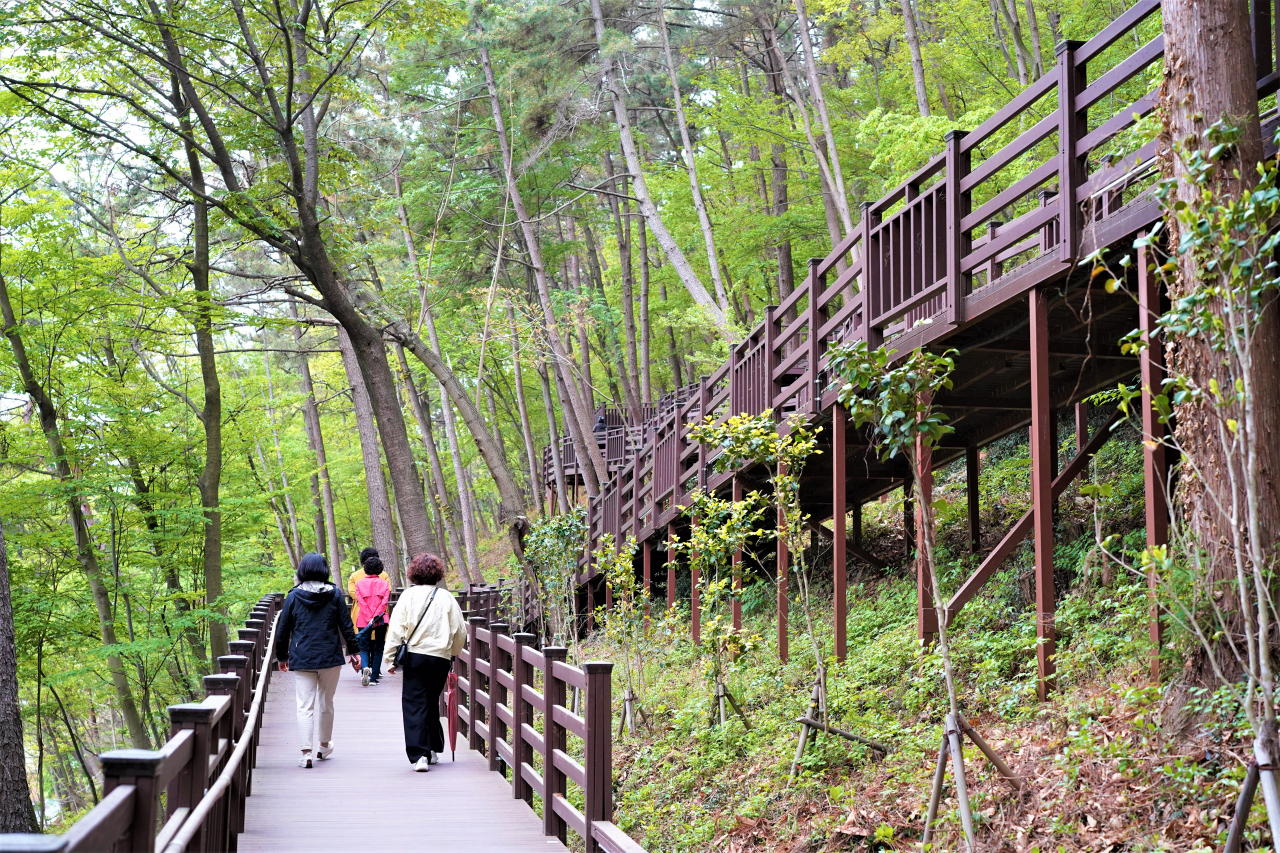
Gwangyang Seosan Eoul-gil
Gwangyang Seosan Eoul-gil is a lesser-known walking trail that is popular among Gwangyang residents.
The 997-meter trail tracks across the foot of mountain Seosan, perfect for light trekking in the city and a great spot to watch the New Year sunrise.
The entire trail is covered by wooden decks, allowing everyone, from small children to the elderly, to enjoy the lush pine trees and fresh air.
Gwangyang Seosan Eoul-gil is a favorite spot for families and wheelchair users to enjoy a calm, relaxing stroll as the use of trekking poles, bicycles, inline skates and electric scooters is forbidden.
There are rest areas for trekkers to catch their breath or pause to look around.
The following article is the third in a series introducing destinations for eco-friendly travel experiences in South Korea. -- Ed.






![[From the Scene] Monks, Buddhists hail return of remains of Buddhas](http://res.heraldm.com/phpwas/restmb_idxmake.php?idx=644&simg=/content/image/2024/04/19/20240419050617_0.jpg&u=20240419175937)





![[Graphic News] French bulldog most popular breed in US, Maltese most popular in Korea](http://res.heraldm.com/phpwas/restmb_idxmake.php?idx=644&simg=/content/image/2024/04/18/20240418050864_0.gif&u=)



![[From the Scene] Monks, Buddhists hail return of remains of Buddhas](http://res.heraldm.com/phpwas/restmb_idxmake.php?idx=652&simg=/content/image/2024/04/19/20240419050617_0.jpg&u=20240419175937)

![[KH Explains] Hyundai's full hybrid edge to pay off amid slow transition to pure EVs](http://res.heraldm.com/phpwas/restmb_idxmake.php?idx=652&simg=/content/image/2024/04/18/20240418050645_0.jpg&u=20240419100350)

![[Today’s K-pop] Illit drops debut single remix](http://res.heraldm.com/phpwas/restmb_idxmake.php?idx=642&simg=/content/image/2024/04/19/20240419050612_0.jpg&u=)